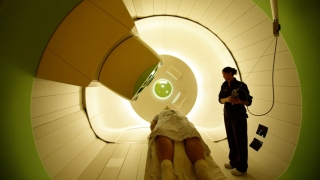 |
| Air pollution is an overlooked risk factor for lung cancer – Image Wikipedia Creative Commons copyright. |
Now a group of British respiratory therapists and public health experts are calling for greater recognition of lung cancer in never-smokers.
 |
| Air pollution is an overlooked risk factor for lung cancer – Image Wikipedia Creative Commons copyright. |
 CANCER DIGEST – April 20, 2019 – Another study about physical activity and health has shown that increased physical activity of any type reduces overall risk of dying regardless of age, sex, or starting fitness level.
CANCER DIGEST – April 20, 2019 – Another study about physical activity and health has shown that increased physical activity of any type reduces overall risk of dying regardless of age, sex, or starting fitness level.  |
| Image courtesy CHOP News |
 |
| Photo courtesy BMJ |